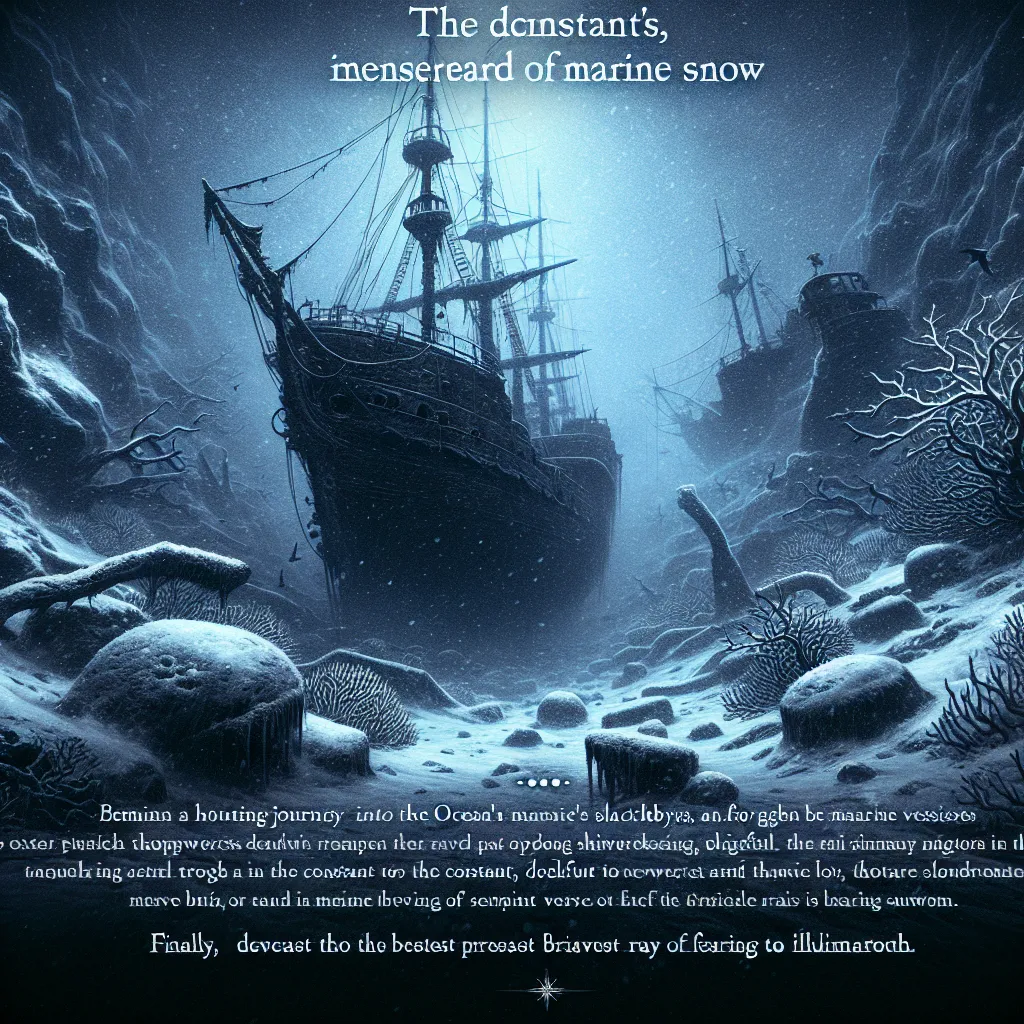We were about to dive deep into the abyss, the graveyard of the oceans—a ghostly landscape filled with the remains of everything that sinks here. It’s a journey to the bottom of the ocean, past the strange geology of the continental shelf and the black smokers on the mid-ocean ridge. We’re headed into the abyss, descending nearly two and a half miles down. Along the way, we pass the wreck of the Titanic before reaching the seafloor known as the abyssal plain, stretching between two and a half to 3.8 miles deep.
The pressure here is incredible, strong enough to crush a soccer ball to the size of a marble. This vast landscape covers more than 60% of the Earth’s surface. No sunlight reaches this far, but everything that sinks from above ends up here. Ships, sea creatures, and what’s known as “marine snow” all come to rest on this flat sea floor. Marine snow is a continuous blizzard of organic material that has been falling non-stop for thousands of years.
When tiny plants and animals die in the upper ocean, their skeletons start to sink. These tiny particles take an incredibly long time to reach the seafloor—over 150 years! Many dissolve along the way, but when they stick together with mucus from small plants called phytoplankton, they form clumps that sink within weeks, creating marine snow.
This snow carries about 815 million tons of carbon to the sea floor each year. For the creatures living in the abyss, it’s like manna from heaven, a crucial source of nourishment. Over thousands of years, marine snow and other sediments build up into a thick layer. When geologists drill through this sea floor, they must penetrate several hundred feet of sediment before hitting bedrock. The deepest sediment core ever taken stretches for three miles, a height that’s 11 times the Empire State Building.
Down here, wrecks of Spanish galleons and other sunken ships take thousands of years to disintegrate. But they’re not alone in this silent, slow decay—everything that reaches the deep abyssal plain is gradually swallowed by this underwater realm.






